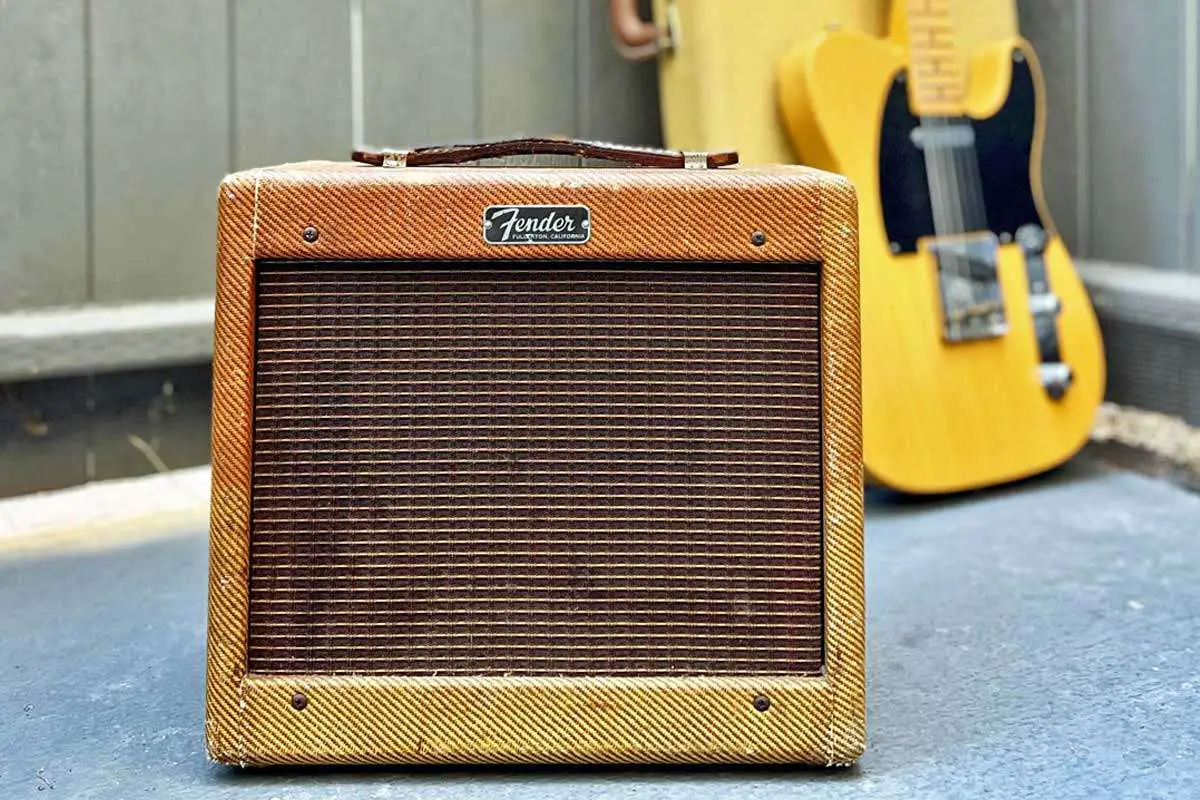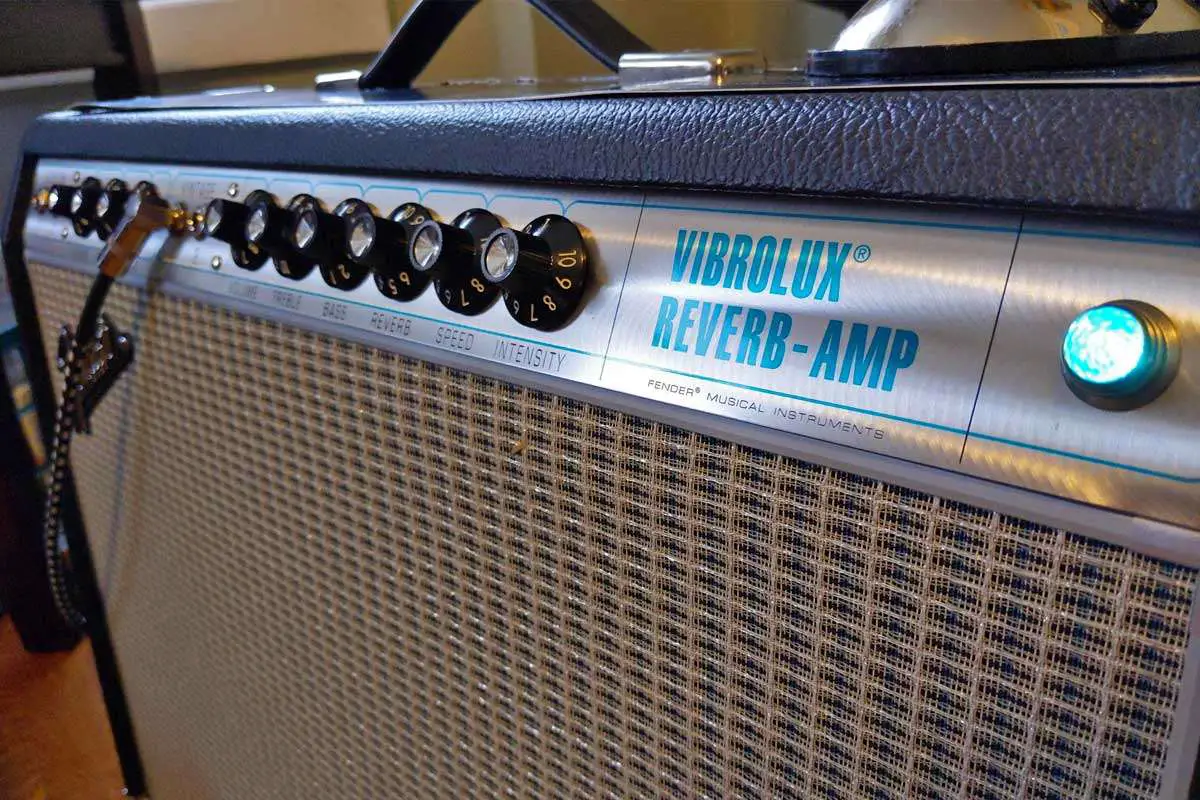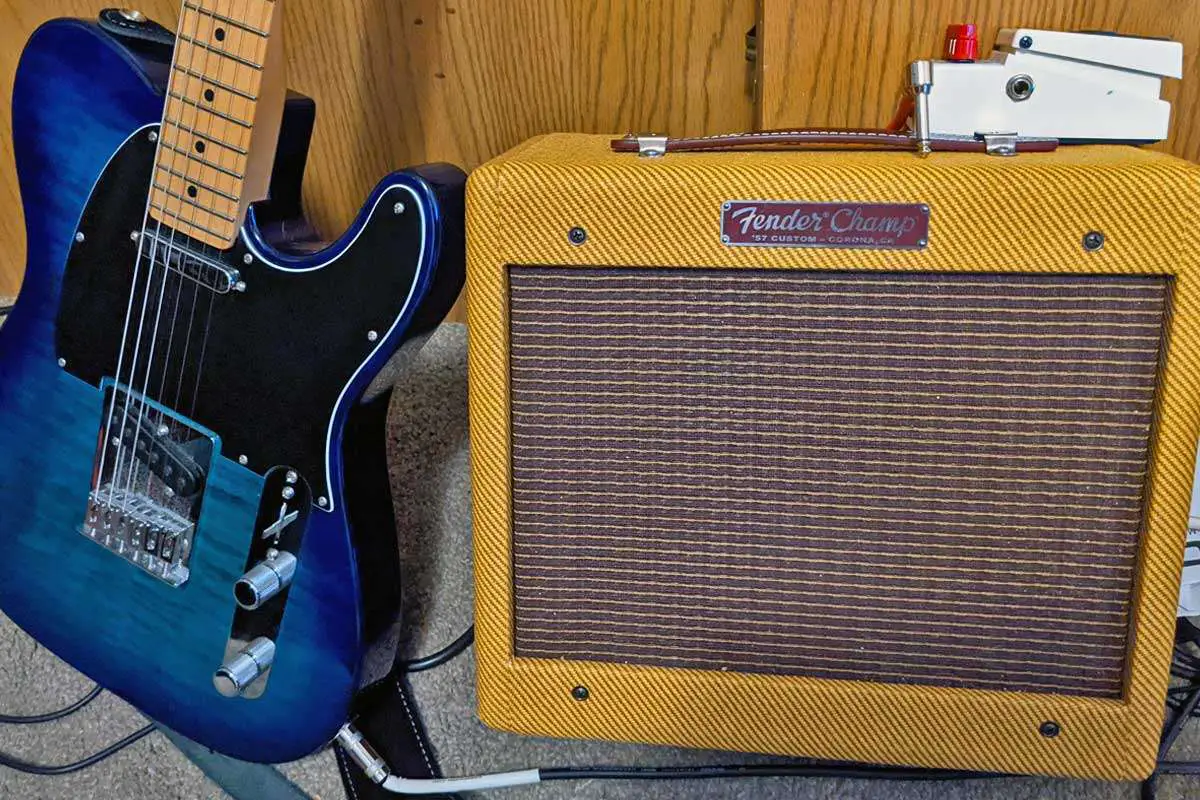Fender’s contribution to the world of music is monumental, particularly through their development of guitar amplifiers which have shaped the sound of generations. The Fender amp history begins with Leo Fender & early experimentation in a small radio shop to the company’s status as a legendary figure in music history, the evolution of Fender amplifiers is a fascinating journey. Throughout the years, these amplifiers have gained a reputation for their distinctive sound quality and have been integral to the tones of countless musicians.
The inception of Fender’s first amplifiers dates back to the 1940s, marking the beginning of a new era in electric instrument amplification. Initially designed to amplify the sound of electric guitars, these amplifiers were soon adopted by musicians who wanted to push the boundaries of their instruments’ capabilities. As the company grew, so did the design and functionality of Fender amplifiers, leading to a variety of iconic models.
These models, dressed in their signature tweed, tolex, and blackface styles, have become synonymous with particular sounds and eras of music. The tweed-covered cabinets of the 1950s, the sleek blackface amps of the 1960s, and the silverface aesthetics of the 1970s each provide a window into the preferences and techniques of the musicians of the time. Many Fender amplifiers are celebrated not only for their craftsmanship but also for their role in the creation of landmark recordings and performances across diverse musical genres. Fender’s journey through the decades proves that their amplifiers are much more than electrical equipment; they are cultural artifacts that continue to resonate with musicians and audiences alike.

The Origins of Fender Amps
The genesis of Fender amps can be traced back to the visionary Leo Fender and his collaborative efforts, which culminated in the production of groundbreaking musical equipment. The journey from a humble radio repair shop to a company that would change the music industry is a testament to innovation and entrepreneurship.
Leo Fender and Early Innovations
Leo Fender began his foray into music equipment with a simple but profound vision: to enhance the quality of amplified sound for musicians. Operating from his Fullerton-based radio repair shop, his innate curiosity led him to experiment with amp designs, putting him on the map as a pivotal figure in the history of guitar amplifiers. Fender’s modifications made amps more efficient and reliable, serving the burgeoning needs of the West Coast’s musicians.
The Formation of K&F Manufacturing
In 1945, Fender partnered with Doc Kauffman, forming the K&F Manufacturing Corporation. Their collaboration resulted in the development of innovative amplifiers. The savvy pairing combined Fender’s design aptitude with Kauffman’s technical expertise, setting the stage for the advent of a new era in amplified music. Their work laid the groundwork for what would soon become the Fender Electric Instrument Company.
Woody Years: The First Fender Amps
The earliest Fender amplifiers, often referred to as “Woodies” due to their wooden cabinets, were created during the late 1940s. These ‘Woody’ models, with their distinctive appearance, were built with simplicity and functionality in mind. Produced in limited quantities, these amps are a rare piece of musical history that illustrates the early stages of the Fender company’s influential role in shaping modern music.
Evolution of Fender Amps
Fender’s amplification history is marked by distinctive eras signified by aesthetic and technical developments. From the raw sound of the Tweed Era to the sophisticated Blackface and Silverface models, each period reflects a step in the company’s innovative journey.
The Tweed Era
The Tweed Era represents the genesis of Fender’s amplifier lineage, marked by tweed-covered cabinets and narrow panel designs earlier on, which evolved into wide panel models. Iconic amps such as the Champ, Bassman, and Deluxe emerged during this period, prized for their warm, fuzzy sound that has become a hallmark for vintage tone enthusiasts.
The Shift to Tolex: Transitioning Years
In the late 1950s, Fender transitioned from tweed to tolex material for amp coverings for added durability and a new aesthetic. This intermediate phase also introduced amplifiers with a black control panel, heralding a change that would lay the foundation for further electronic innovations.
Introduction of Blackface and Silverface Models
The Blackface models, with their distinctive black control panel, aluminum trim, and grille cloth with a forward-looking design, set a new standard in the early to mid-1960s. Their sound was cleaner and crisper, supporting the advancing techniques of guitarists. The Silverface amps followed, carrying a silver control panel and minor circuit tweaks, indicating Fender’s adaptability to the changing demands of musicians. These models featured improved reverb and vibrato, with the Twin Reverb being one of the most popular amplifiers from this era.
Iconic Fender Amp Models
Fender amplifiers have played a crucial role in the sound of electric guitar music, with models such as the Twin Reverb, Bassman, and Princeton becoming benchmarks for tone and performance.
The Fender Twin Reverb
The Fender Twin Reverb is a legendary amplifier known for its crystal-clear highs and robust lows. Introduced in the mid-1960s, this amp is celebrated for its lush reverb and the iconic vibrato effect that became synonymous with the surf rock genre. The Twin Reverb, sporting the distinguished silver-and-black “Blackface” design and Fender logo, quickly became a favorite for gigging musicians needing a powerful and reliable amp that could deliver a wide range of sounds with pristine clarity.
The Fender Bassman
Originally designed as an amplifier for bass guitars, the Fender Bassman gained a reputation among six-string guitarists for its rich overdriven tones, making it a cornerstone for blues and rock musicians. The Bassman’s circuitry and 4×10 speaker configuration laid the foundation for many other successful amps and influenced the development of Marshall amplifiers, which would go on to define the sound of rock.
The Fender Princeton
The Fender Princeton stands out as a smaller, more portable amplifier that nevertheless offers a full, warm sound. Known for its manageable volume and smooth overdrive at higher settings, the Princeton has become a studio favorite, particularly valued for recording sessions. It delivers the classic Fender reverb and vibrato effects in a compact package, making it ideal for players seeking Fender’s signature sounds without the bulk of its larger counterparts.
Technological Advancements
Fender’s journey through technology has led from vintage tube sounds to the precision of digital modeling. Their amplifiers have been a canvas for innovation, reflecting changes in technology and musicians’ needs.
From Vacuum Tubes to Solid-State
Fender’s early amplifiers, like the iconic Twin Reverb, were famed for their vacuum tube tone, warmth, and natural overdrive. As technology evolved, Fender adapted the solid-state technology, which uses semiconductor devices rather than thermionic tubes. This transition meant amplifiers became more reliable and required less maintenance. Solid-state models also introduced a new sound profile and lighter weight, which made them more portable and affordable.
Digital Technology and Modeling Amps
Moving beyond traditional analog circuits, Fender embraced digital technology. Fender’s circuit boards became the platforms for digital modeling amplifiers capable of replicating a wide array of sounds and effects. The digital era brought to life the Vibrasonic models, known for their advanced tremolo circuit and crisp clear tones. Digital technology allowed for more precise control over sound shaping and integrated effects, carving a new path for amplifiers in terms of versatility and functionality. Fender Musical Instruments continues to innovate within digital realms, pushing the envelope of what a guitar amplifier can achieve.
Aesthetic and Design Features
The Fender amplifier’s design evolution is marked by distinct eras characterized by specific aesthetic changes ranging from exterior materials like tweed and tolex to iconic logo designs. These variations not only reflect the changing tastes in design but also highlight Fender’s role in the development of guitar amplifiers.

Cabinet Designs Across the Decades
From the 1940s through the early 1960s, Fender amplifiers were commonly sheathed in a tweed fabric, a textured material offering a distinctive look and feel. This era included the wide panel tweed designs, which transitions to the narrow panel models. They moved from pine cabinets early on to oak, which added to their durability. In the mid-1960s, the blackface amps emerged, notable for their black control panels and white script logos. This period introduced smoother tolex material as the standard covering, replacing the tweed’s texture and look.
By 1968, the silverface period began, distinguished by a silver control panel and a new blue and silver iteration of the Fender logo. These also often came with blonde tolex covering. Various features like bright switches were also integrated, impacting the tonal options of the amps.
The Role of the Fender Logo
The Fender logo is an essential aspect of the brand’s identity, adorning every amplifier with its evocative script. It has seen several iterations over the decades. The famous spaghetti logo, first used in the 1950s, featured a thin, spindly font. The typeface grew bolder in the blackface era, laid on the amps in a striking contrast to the black background. In the silverface age, the logo evolved again, maintaining its boldness but reconfiguring its color to match the new panel’s silver hue and complementing the blonde tolex exterior.
Throughout its history, the various logos have signified Fender’s commitment to brand recognition and consistency, remaining a hallmark of quality and design in the music world.
Fender Amps in Musical Culture
Fender amplifiers have played a defining role in shaping the sounds of modern music, particularly within the realms of rock ’n’ roll, and have been the choice tools for legendary musicians.
Fender’s Impact on Rock ’n’ Roll
Since its inception, Fender has been synonymous with the evolution of rock ’n’ roll. The brand’s amplifiers, known for their clear, powerful tones and reliable construction, transformed the electric guitar into a primary voice in popular music. Crucially, they provided the necessary volume and clarity for guitars to be heard alongside other instruments in bands. The distinctive Fender sound helped to create a raw energy that became a hallmark for rock ’n’ roll. It wasn’t just about volume; the tone control that Fender amps offered allowed artists to craft unique sounds that captivated audiences and inspired generations.
Notable Musicians and their Fender Amps
Over the decades, many iconic artists have forged their sound with the aid of a Fender amp. Eric Clapton, for instance, famously used a variety of Fender amplifiers throughout his career, including the Twin Reverb and ‘57 Custom Amp, shaping his signature blues-infused rock style. His soulful, crisp sounds on these amps can be heard on legendary recordings, making him and his Fender amp an integral part of music history.
Here’s a table with musicians and the Fender guitar amps they are widely recognized for using:
| Musician | Fender Amp Model Used |
|---|---|
| Chuck Berry | Fender Champ |
| Eric Clapton | Fender Twin Reverb |
| Stevie Ray Vaughan | Fender Vibrolux and Dumbles |
| Jimi Hendrix | Fender Twin Reverb |
| Buddy Guy | Fender Bassman |
| David Gilmour | Fender Deluxe Reverb |
The combination of Fender amps with their companion electric instruments, especially the Stratocaster and Telecaster guitars, created a revolutionary toolkit for musicians. These instruments and amplifiers together helped to define the sonic palette of rock ’n’ roll, and continue to be staples in the music industry as reliable, high-quality equipment for stage and studio alike.
Related: Famous Guitars in Rock History
Fender’s Product Expansion
Fender’s evolution in amplifier production has been marked by significant milestones, particularly the introduction of bass amplifiers and the development of amps tailored for practice and student use. These offerings broadened the musical possibilities for bassists and learners alike.

Introduction of Bass Amplifiers
The Fender Bassman was a revolutionary step in the evolution of Fender’s product line. Initially introduced to accompany the Precision Bass, the Bassman was the first of Fender’s bass amplifiers designed to deliver a rich, deep tone for bass guitars. This amplification was pivotal for bassists, allowing for pronounced bass presence in ensemble settings.
Launching Practice and Student Models
With the successful introduction of powerful amplifiers for professional musicians, Fender also began to address the needs of novice players. The Fender Champ, a smaller, more accessible amplifier, provided a practice-friendly solution with high-quality sound at lower volumes. This practice amp and other student models made the Fender experience available to a wider audience, facilitating the musical journey of beginners with reliable and affordable equipment.
Special Editions and Custom Runs
Fender has developed a rich tradition of crafting special edition and custom run amplifiers that offer unique features and are often associated with celebrated musicians. These offerings go beyond standard production lines and reflect the company’s innovative spirit and commitment to personalized sound.

Artist Signature Series
The Fender Artist Signature Series amplifiers reflect the unique specifications favored by influential guitarists. One prominent example is the Eric Clapton series, which includes a range of custom amplifiers developed in collaboration with the legendary musician known for his distinctive sound. These signature models incorporate personalized modifications that cater to Clapton’s tonal preferences and have influenced countless other artists seeking similar auditory expression.
Limited Edition Releases
Limited edition releases are a hallmark of Fender’s commitment to innovation, offering unique aesthetics and sonic characteristics. For example, the Dual Professional was Fender’s first custom amplifier, featuring a sophisticated look and a design catering to professionals. These limited runs are often produced in small batches, making them highly sought after by collectors and musicians alike. Another notable mention is the Tribune model, which showcases the exquisite craftsmanship and sonic capabilities that these amplifiers possess, setting the stage for a truly unique performance.
Maintaining and Collecting Fender Amps
Collecting vintage Fender amps has become a passion for many, combining the appreciation of their rich tonal qualities and historical significance. Proper maintenance is essential to preserve their value and functionality.
The Vintage Market
The allure of owning a piece from the tweed phase, Fender’s earliest amp era, drives the vintage market. Collectors often seek models such as the Champion 600, known for its creamy and harmonic rich sounds, and the Vibrolux, a staple for clear, vibrant tones. The Vibroverb is another coveted piece, celebrated as the first amp with built-in reverb. It’s these distinctive characteristics that make each Fender model, including the Champ II and the Super Champ, sought after, particularly in their original ‘tweed’ form. Prices vary widely: a mint condition Champion 600 or a rare Vibroverb can fetch premium sums.
Repair and Restoration Tips
When it comes to repair and restoration, authenticity is key. For a Fender amp to retain its value, original parts and period-correct components should be used. It’s advisable to find an experienced technician, especially for intricate models like the Super Champ or Vibrolux. Key restoration steps include:
- Inspecting: Check tubes, capacitors, and speakers for age-related wear.
- Cleaning: Dust and grime can accumulate over time, affecting performance and value.
- Electrical safety: Ensure transformers and wiring adhere to modern safety standards.
For collectors maintaining these historic pieces, the goal is to uphold the amp’s integrity while ensuring its operability for years to come.
The Future of Fender Amplification
As Fender Musical Instruments continues to shape the sounds of musicians in California and beyond, their commitment to innovation and sustainability heralds a new era for amplifiers such as the Twin amps and others in their lineup.
Innovation in Modern Amps
Fender continues to harness digital technology to elevate the functionality and versatility of their amplifiers. Incorporating cutting-edge features such as USB connectivity and Wi-Fi capability has become a staple in solid-state amps, offering artists unprecedented convenience in creating and sharing music. The move towards a more integrated digital experience provides users with the ability to easily update amp models and access a vast array of digital effects, exemplified by their newest iterations of modeling amps.
Sustainability in Amp Production
Following a growing environmental consciousness, Fender is making strides in sustainability in amp production. The company emphasizes the use of eco-friendly materials and strives to minimize waste in their manufacturing processes. They are also exploring innovative means to reduce the carbon footprint of their California-based facilities. By implementing green initiatives and considering the full lifecycle of their products, Fender aims to set a benchmark for sustainability in the amplification industry.
